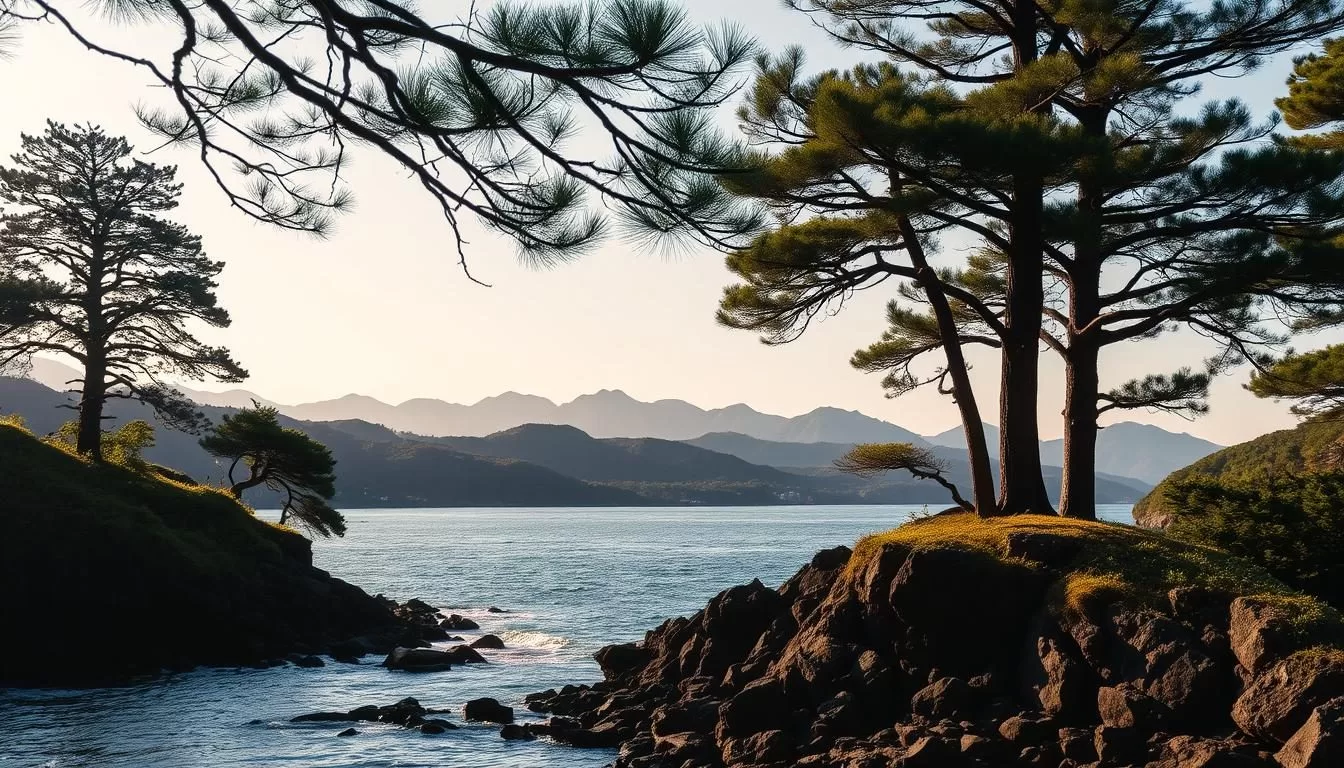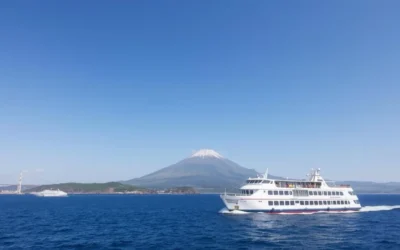✓ Accommodations✓ Flights✓ Rental Cars
Nestled between Japan and South Korea, Tsushima is a treasure trove of unspoiled nature and rich cultural heritage. This enchanting island is a natural preserve, with 89% of its landscape covered in lush vegetation and majestic mountains, making it an ideal destination for those seeking an unforgettable journey.
As you explore this captivating place, you’ll encounter a unique ecosystem, home to the rare Tsushima wildcat and one of the largest concentrations of Japanese honey bees. This guide will walk you through the top attractions and activities, helping you plan an adventure that combines outdoor escapades, historical exploration, and local culinary delights.
Discovering Tsushima Island: Japan’s Hidden Gem
Nestled between Japan and Korea, Tsushima Island is a hidden gem worth discovering. As the largest island in Nagasaki Prefecture, it spans 709 square kilometers, offering a diverse range of landscapes and ecosystems.
Geographic Location and Unique Position
Tsushima Island is situated in the Korea Strait, making it a significant location both geographically and culturally. Its unique position has influenced its history and biodiversity, creating a blend of Asian cultures and natural beauty. The island’s mountainous terrain covers about 90% of its area, with lush forests and primeval vegetation.
Island Overview and Natural Landscape
The island is a haven for nature lovers and explorers, with 89% of its area covered in mountain forests. The ocean surrounding Tsushima Island is pristine, playing a crucial role in local life and offering breathtaking views. The island’s ria coastline creates numerous bays and inlets, adding to its beauty.
| Feature | Description |
|---|---|
| Size | 709 square kilometers |
| Mountainous Terrain | 90% of the island |
| Forest Coverage | 89% mountain forests |
| Coastline | Ria coastline with numerous bays and inlets |
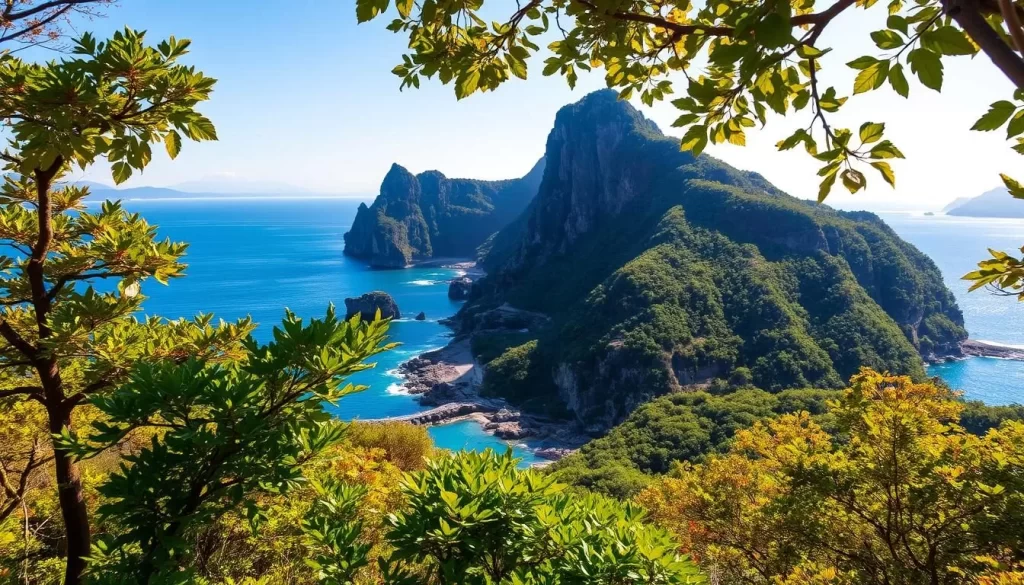
Tsushima Island is a perfect home for diverse flora and fauna, making it an ideal destination for those seeking to connect with nature. The mountain peaks offer astounding views, especially from the Eboshidake Observatory.
How to Get to Tsushima Island
Planning a trip to Tsushima Island involves choosing from a range of travel options, including flights and ferries. Located between Japan and South Korea, Tsushima Island is accessible from major cities like Fukuoka and Nagasaki.
By Ferry from Fukuoka and South Korea
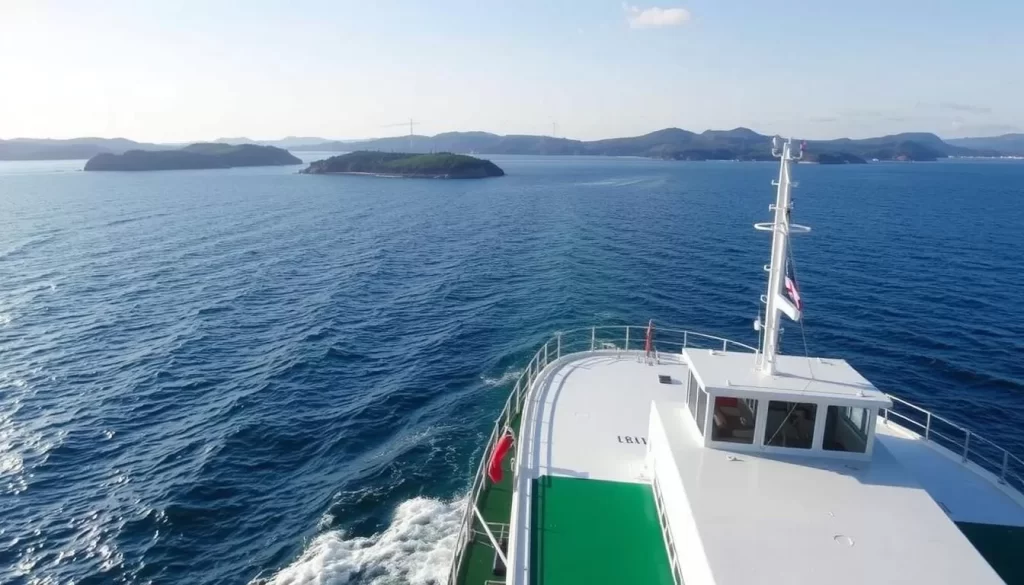
You can travel to Tsushima Island by ferry from Fukuoka, which takes several hours, or from South Korea, offering a unique international travel experience. The ferry service provides a scenic route, although it is generally slower than flying.
By Plane from Nagasaki and Fukuoka

For a quicker trip, you can fly from Nagasaki Airport or Fukuoka Airport to Tsushima Yamaneko Airport. The flight from Nagasaki takes around 35 minutes, while from Fukuoka, it takes approximately 30 minutes. This option is more convenient for those short on time or preferring a quicker journey.
Upon arrival, due to the island’s large size (82 km from north to south) and limited public transportation, it’s advisable to use a taxi or consider renting a car to navigate the island efficiently.
Natural Wonders and Scenic Viewpoints
Discover the unspoiled beauty of Tsushima Island, where nature’s splendor awaits around every corner. The island is home to a diverse range of natural attractions that are sure to captivate any visitor.
Eboshidake Observatory and Aso Bay Views
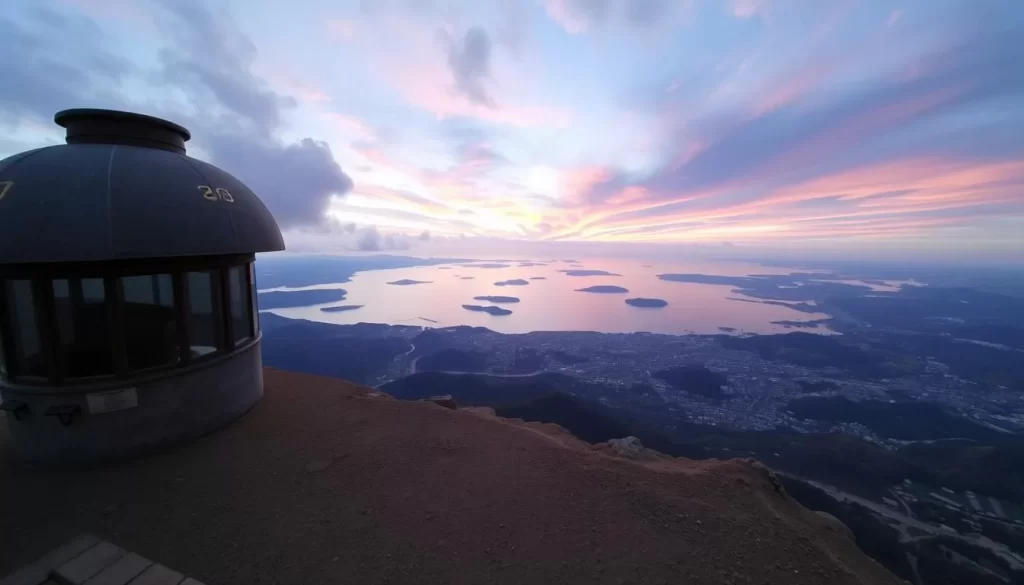
The Eboshidake Observatory offers breathtaking views of Aso Bay, making it a must-visit site on Tsushima Island. The observatory’s location provides a stunning vantage point to appreciate the surrounding landscape and ocean views.
Mt. Shiratake Primeval Forest Hiking
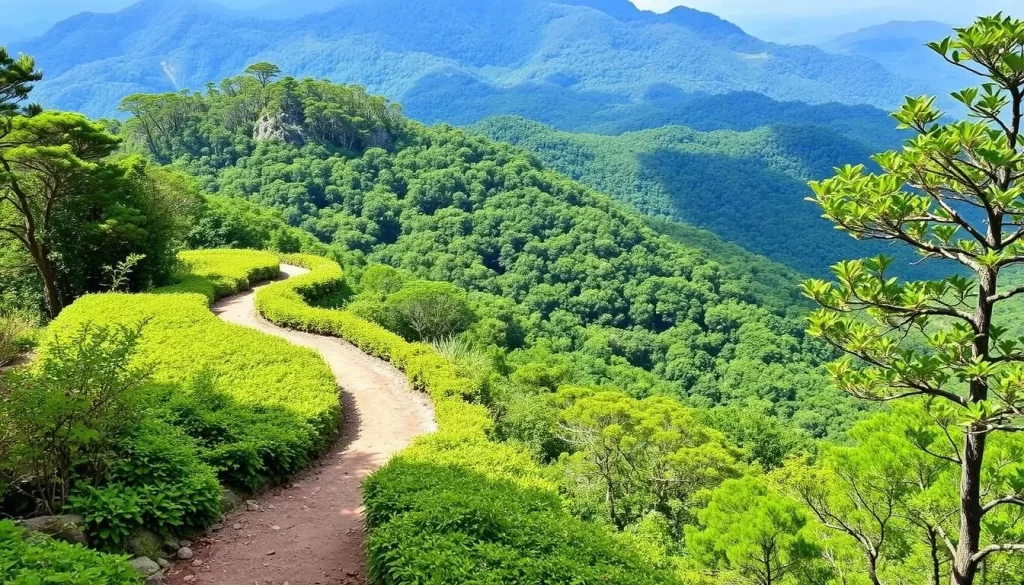
For those who love hiking, the Mt. Shiratake Primeval Forest offers an unforgettable experience. The forest is pristine and untouched, providing a unique opportunity to connect with nature in a serene and beautiful setting.
Miuda Swimming Beach

Miuda Swimming Beach is one of Japan’s top 100 beaches, renowned for its crystal-clear ocean waters and soft white sands. Located at the northern tip of Tsushima Island, it offers a picturesque setting with accommodations ranging from camping sites to pensions like Miuda Pension, making it an ideal summer destination.
Historical Sites and Cultural Attractions
As you explore Tsushima Island, you’ll uncover a rich tapestry of historical and cultural landmarks that have stood the test of time. The island is home to numerous sites that showcase its unique cultural heritage and historical significance.
Watazumi Shrine and Its Ocean Torii Gates
Watazumi Shrine is a sacred site located on Tsushima Island, famous for its striking ocean torii gates. This shrine is a must-visit attraction, offering a unique blend of natural beauty and spiritual significance.
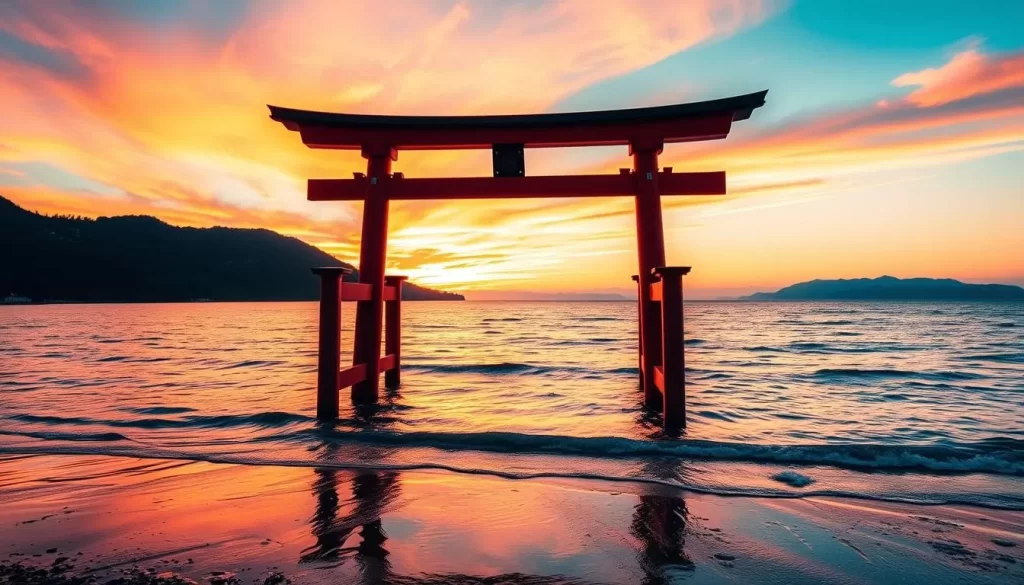
Banshoin Temple and Ancient Gravesites
Banshoin Temple is another significant cultural landmark on the island, known for its historical importance and serene surroundings. The temple complex includes ancient gravesites that date back centuries, providing a glimpse into the lives of those who lived on the island years ago.

Kaneda Castle Ruins and Military Heritage
Kaneda Castle Ruins stand as a testament to Tsushima Island’s strategic military importance throughout history. The castle was used for over 1200 years, playing a significant role in various conflicts, including the Russo-Japanese War. Visitors can explore the remaining stone walls and enjoy panoramic views from the hilltop fortification, feeling as though they are part of a broader world history.
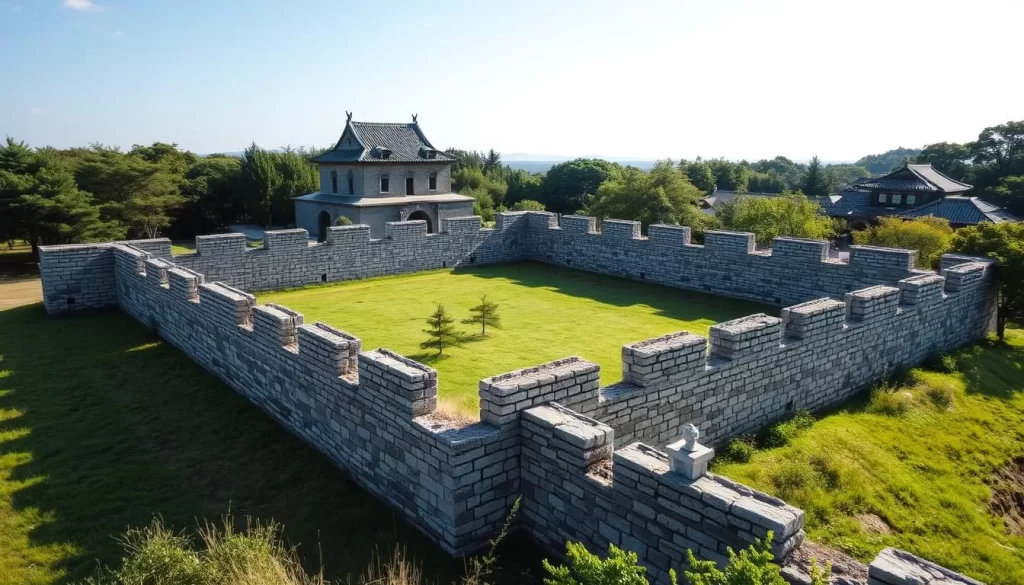
Unique Wildlife and Conservation Experiences
Discover the untouched natural beauty and wildlife of Tsushima Island, a true gem for nature lovers. As you explore this island, you’ll have the opportunity to engage with its unique conservation efforts and experience its rich biodiversity firsthand.
Tsushima Wildlife Conservation Center and the Leopard Cat
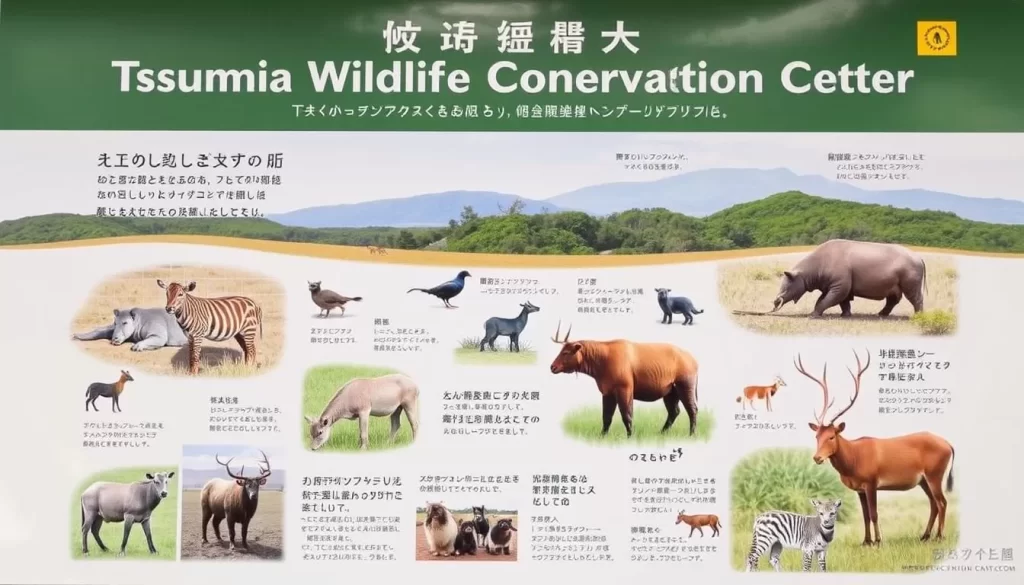
The Tsushima Wildlife Conservation Center is dedicated to protecting the island’s unique wildlife, including the endangered Tsushima leopard cat. This center offers insights into the conservation efforts and the importance of preserving the natural habitat of this rare species. By visiting the center, you can learn about the initiatives in place to ensure the survival of the Tsushima leopard cat and other native wildlife.
Japanese Honey Bee Farms and Natural Ecosystems
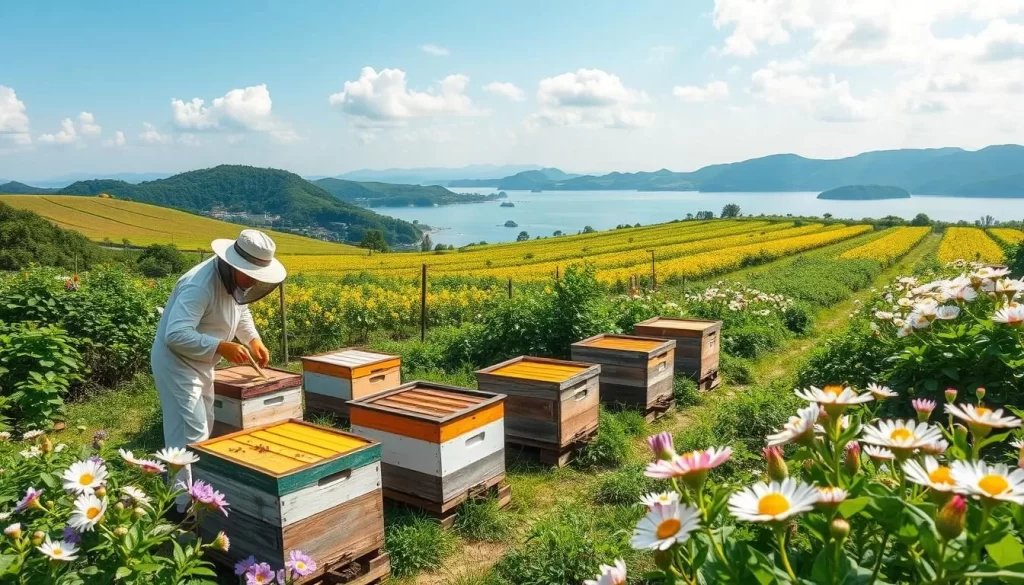
Tsushima Island is renowned for its Japanese honey bee farms, which produce a distinctive amber-colored honey. The traditional beekeeping methods used here have been passed down through generations, and the honey is not only a local delicacy but also a perfect souvenir. You can experience the unique characteristics of Japanese honey bees and their importance to the island’s ecosystem by visiting these farms.
The honey produced here is perfect for gifts, and you can enjoy it over mochi, fresh fruits, or ice cream. The experience allows you to delve deeper into the island’s natural ecosystems and appreciate the ecological importance of these native bees.
Tsushima Island, Japan: Best Things to Do for Food Lovers
Immerse yourself in the flavors of Tsushima Island, a haven for food lovers. The island offers a unique blend of traditional Japanese cuisine with a distinct local twist, making it an exciting destination for culinary enthusiasts.
Local Delicacies: Taishu Soba and Rokubee Noodles
Tsushima Island is renowned for its local delicacies, including Taishu Soba and Rokubee Noodles. Taishu Soba is a type of buckwheat noodle that’s both nutritious and flavorful, often served cold or in a hot broth. Rokubee Noodles, on the other hand, are known for their springy texture and are typically enjoyed with a savory sauce. You can savor these dishes at local eateries across the island.
Seafood Specialties: Anago Nigiri and Iriyaki
The seas around Tsushima Island are rich in seafood, providing an array of fresh catches. Anago Nigiri, or eel sushi, is a specialty, offering a melt-in-your-mouth experience. Iriyaki, a grilled fish dish, is another must-try, showcasing the freshness of the island’s seafood. For an authentic experience, visit local restaurants that serve these dishes.
Where to Eat Authentic Tsushima Cuisine
To truly experience Tsushima’s culinary delights, consider staying in traditional Japanese homes through homestay programs. Here, you can learn to prepare local dishes with your host family using seasonal vegetables and fresh fish. Many inns also offer fishing rod rentals, making it easy for beginners to try their hand at fishing. Additionally, food-focused tours are available, combining restaurant visits with market tours and cooking demonstrations, providing a comprehensive culinary experience on this beautiful island at a lovely place.
Conclusion: Planning Your Perfect Tsushima Island Adventure
With its rich history, stunning landscapes, and vibrant culture, Tsushima Island is an ideal destination for travelers seeking an authentic experience. The island offers a diverse range of attractions and activities, from exploring historical sites and natural wonders to immersing yourself in local culture through the unique Nohaku homestay/farmstay program.
To make the most of your visit, plan ahead considering the best times to visit for different activities. Summer is ideal for beachgoers and water enthusiasts, while other seasons offer their own unique experiences. A minimum stay of 2-3 days is recommended to fully appreciate what the island has to offer. You can choose from various accommodation options, including homestays starting from 5,000 yen per person, traditional inns, and camping.
When planning your trip, be sure to book your ferry or flight in advance, especially during peak seasons. With its blend of nature, history, and culture, Tsushima Island is a hidden gem that promises an unforgettable experience. So, start planning your adventure today and discover the charm of this captivating island.
The above is subject to change.
Check back often to TRAVEL.COM for the latest travel tips and deals.
